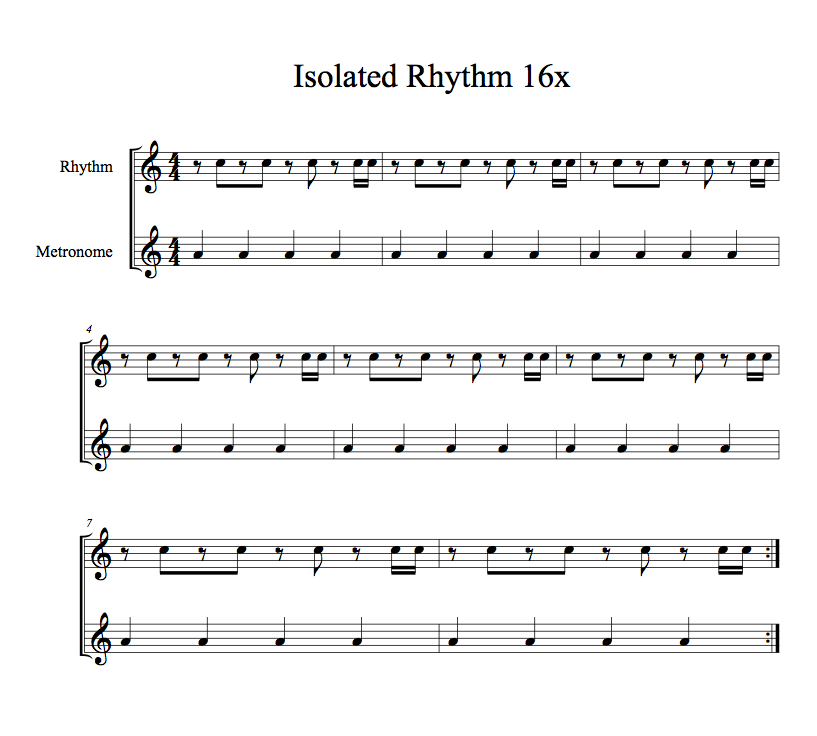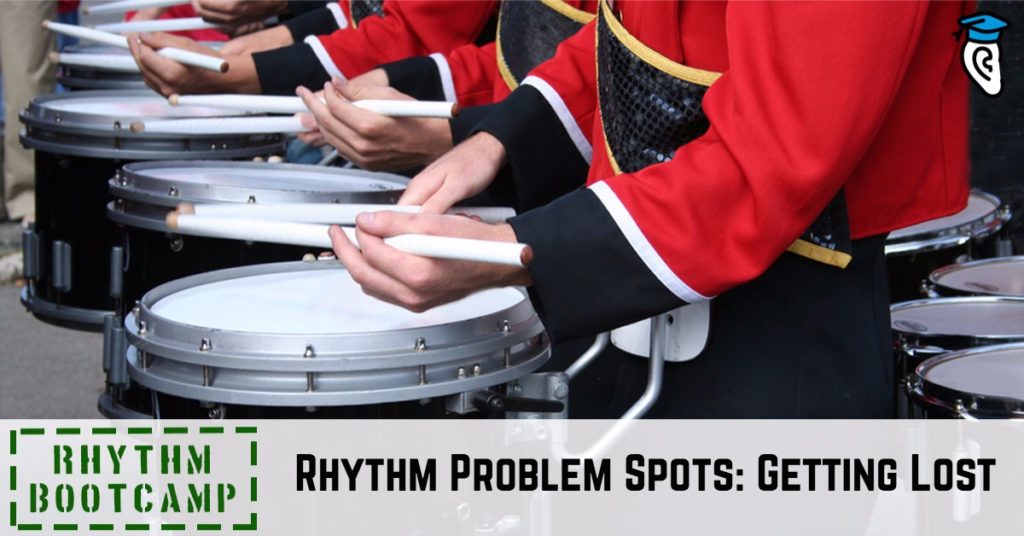Every musician has been there, from the seasoned pro to the beginner band kid playing her first concert. You are playing your heart out and you find out that you are lost, just lost, lost, lost. What can you do? In this article I’ll share some ways you can make sure you never get that sinking feeling of being lost again.
Why do we get lost? Often this happens when a song is transitioning from one section to another and the musician is so caught up in their part that they don’t realize that everyone else has moved on. Read our previous article for tips on transitions. Getting lost also happens when you have to wait an inordinate amount of time to come in.
How to avoid getting lost in music
The best way to avoid getting lost is by counting beats in your head, tapping your toe to the beat. During long periods of rest, make a mental note of cues or actually mark up notes in your music to remind you. If you find that you are getting lost when the band is transitioning from one section to another because you get lost in your head, for example in the solo section before the final chorus, then make a conscious effort to “stay in the game” and avoid zoning out.
In some situations you can have a band member help out by giving everyone a cue like a nod of the head or a hand signal to indicate that it’s time to move on. Most bands that have played together for a long time know how to read each other like a book, but starting musicians might take some time to read each other’s signals. Look for things like head nods, brief pauses, hand signals, or even something like a page turn. If you have a conductor or band leader, watch her like a hawk.
There are also some simple exercises you can use to develop better time-tracking skills yourself.
Exercise 1: Keeping Track of Time
In this exercise, you will play the same rhythm exactly 16 times. Try not to lose count of how many times you have played the rhythm. See if you end at the same time as the track.
Instructions
- Listen to the isolated rhythm and memorize it.
- Starting with the sample track, play the isolated rhythm 16 times, counting in your head or out loud as you play the rhythm.
- Do you end with the track?

Exercise 2: Practice with Offbeats
In this exercise you will play on the offbeats with the snare drum in this bluegrass practice track.
Instructions
- Listen to the track.
- Practice tapping, clapping or playing the offbeats along with the snare drum.
- Can you play from the beginning to the end without getting lost?
Lost and Found
Getting lost when playing music is a common problem and it’s normally caused by changes in tempo or rhythm (i.e. transitions) or long breaks in your part of the music. The solution is simple and effective: train yourself to have a rock-solid reliable ability to keep… on… counting!
Continue practicing transitions and keeping in time with your everyday practice. Isolate problem spots and transitions in your songs, working with them over and over again with a metronome. Practice is always more fun with a friend, so be sure to call over your band buddies and jam out to perfect your rhythm and time!








